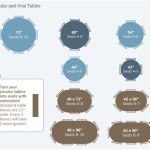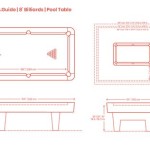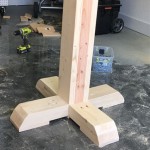What Size Pool Tables Do Pubs Use? Understanding Pub Pool Table Dimensions
Pool tables are a common fixture in pubs worldwide, providing entertainment and a social gathering point for patrons. However, the size of these pool tables can vary, leading to questions about the standard dimensions employed in commercial establishments. Understanding the different sizes and their implications can be helpful for pub owners looking to purchase a table or players curious about the game they're playing.
The size designation of a pool table refers to its playing surface dimensions, measured from bumper to bumper. While domestic tables are often found in various sizes to accommodate different room sizes, pubs tend to favor specific dimensions that balance gameplay, space constraints, and commercial viability. This article will delve into the common sizes found in pubs, the reasons behind their selection, and the factors influencing the choice of a particular size.
The Predominance of 7-Foot Pool Tables in Pubs
The most frequently encountered pool table size in pubs is the 7-foot table. This size, also known as a bar box, offers a combination of playability and practicality that makes it a popular choice. The standard playing surface dimensions for a 7-foot table are typically 39 inches wide by 78 inches long. The overall size of the table, including the frame, will be larger, typically around 44 inches by 83 inches. The height of the table from the floor to the top of the playing surface is usually around 31 inches.
The reasons for the 7-foot table's prevalence are multifaceted. Firstly, its size allows for relatively fast-paced games, appealing to players looking for quick matches and rotations. Secondly, it fits comfortably in most pub settings without dominating the space. Many pubs have limited floor space, and a larger table could significantly impact the flow of customers and the overall atmosphere. The 7-foot table strikes a good balance between providing a decent playing area and minimizing space consumption.
Thirdly, 7-foot tables are often coin-operated, making them a revenue-generating asset for pub owners. The coin mechanism is typically integrated into the table's structure, requiring players to insert coins to start a game. This business model allows pubs to recoup the cost of the table and generate ongoing income. The affordability and widespread availability of 7-foot tables also contribute to their popularity in the pub environment.
Finally, a large number of pub leagues, especially at the amateur level, are played on 7-foot tables. This means that players who frequent pubs are likely familiar with the dimensions and playing characteristics of these tables. Therefore, pubs that offer 7-foot tables provide a familiar and comfortable experience for their customers, further increasing their appeal.
Understanding the Role of 6-Foot Pool Tables in Smaller Pubs
While 7-foot tables are the most common, 6-foot pool tables also exist in pubs, particularly those with limited space. These tables, sometimes referred to as "mini pool tables," have playing surface dimensions of roughly 33 inches by 66 inches. The overall table dimensions are similarly reduced, making them suitable for smaller rooms or areas where space is at a premium.
Pubs with limited square footage might opt for a 6-foot table to maximize seating and movement space. While offering a smaller playing area, these tables still provide entertainment value and can attract customers. The faster game pace, due to the shorter distances between objects balls, can also be appealing to some players. 6-foot tables require less cueing space around the perimeter. This is important in crowded or tightly packed environments where players may struggle to take a full swing around a larger table.
However, the smaller size also affects gameplay. The balls are closer together, potentially leading to more clustered shots and requiring different strategies. Skilled pool players might find the 6-foot table less challenging than larger tables due to the reduced complexity of shot making. Despite these differences, the 6-foot table serves as a viable alternative for pubs that cannot accommodate a standard 7-foot table, offering a compromise between space and entertainment.
The financial aspects of smaller tables may differ. Smaller tables may have less expensive coin-operated systems or may even be offered without coin operation. Pub owners can choose whether or not to charge per game. This decision depends on many factors, including the pub's overall business model and local competition. Some pubs may choose to offer free games to attract and retain customers, while others may rely on coin operation to generate revenue from the pool table.
The Rare Occurrence of 8-Foot and 9-Foot Tables in Pubs
Larger pool tables, such as 8-foot and 9-foot models, are rarely found in typical pubs. An 8-foot table has playing surface dimensions of 44 inches by 88 inches, while a 9-foot table measures 50 inches by 100 inches. These sizes are more commonly found in dedicated pool halls, homes with ample space, or competitive tournament venues.
The primary reason for their scarcity in pubs is space. These tables require significantly more room, both for the table itself and for players to maneuver around it comfortably. Most pubs simply do not have the square footage to accommodate such large tables without compromising seating capacity or creating an overcrowded environment. The cost of the table is also a factor because larger tables are generally more expensive than their smaller counterparts.
The larger playing surface of 8-foot and 9-foot tables also alters the gameplay significantly. The longer distances between balls increase the difficulty of shots, requiring more skill and precision. Pubs that primarily cater to casual players may find that the increased challenge of larger tables deters customers. In addition, professional pool tournaments and leagues, which are typically played on 9-foot tables, are unlikely to be found in typical public houses. Therefore, the incentive to invest in a larger, more challenging table is minimal. Players accustomed to smaller tables will find the larger dimensions require adjustments to aiming, stroke power, and strategic planning.
While the presence of a 9-foot table in a pub might be considered a novelty or a marketing tactic to attract serious pool players, the practical considerations of space, cost, and gameplay difficulty generally outweigh the benefits. In the vast majority of cases, pubs opt for smaller, more manageable 6-foot or 7-foot tables. These tables provide a balance between playability, space efficiency, and commercial viability, making them the preferred choice for most pub owners.
Ultimately, the selection of pool table size depends on the unique context of each pub, including its size, target market, and business model. While 7-foot tables remain the standard, variations exist to suit different needs and preferences. Understanding these variations and their implications is crucial for both pub owners and players alike.

Pool Table Room Size Guide Home

Pool Table Room Size Guide Home

Refurbished 7 X 4 Mahogany Ex Pub Pool Table

Pool Tables Sizes

Pool Tables Sizes

What Length Is A Full Size Pool Table And Why Hamilton Billiards Snooker Blog

How Big Is A Pub Pool Table

What Is A Full Size British Pool Table Liberty

How Big Is A Pub Pool Table

What Is A Full Size British Pool Table Liberty
Related Posts








